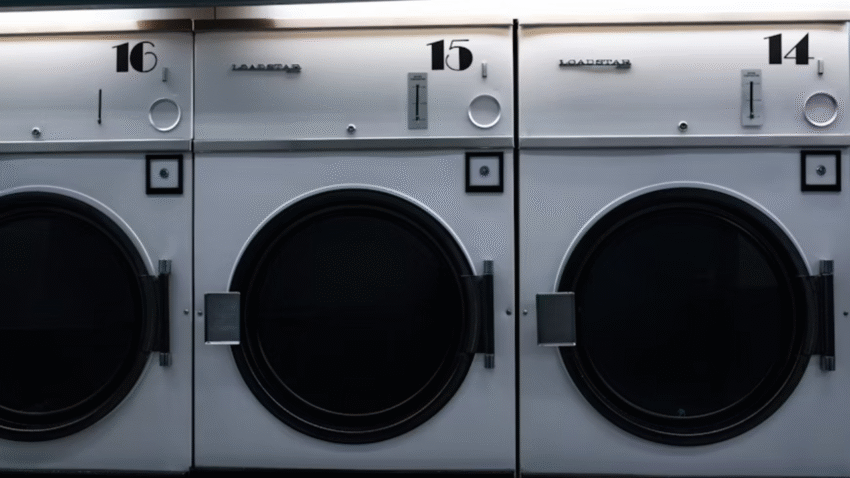Introduction
Is your washing machine rattling, shaking, or making loud thumping sounds during the spin cycle? A noisy washer is often the result of an unbalanced drum. Learning how to balance a noisy washing machine can prevent damage to your appliance, reduce wear on internal components, and keep laundry day peaceful. Fortunately, balancing a washer is a relatively simple task that most homeowners can handle without calling a technician.
Why Balancing a Washing Machine Matters
When a washer is unbalanced, it vibrates excessively during the spin cycle. This can:
- Damage internal parts like bearings, suspension rods, or the motor.
- Cause the washer to move across the floor, creating safety hazards.
- Increase noise levels that disrupt your home.
- Reduce washing efficiency because the drum can’t spin at full speed.
Balancing your washer improves its performance, extends its lifespan, and helps avoid costly repairs.
Step-by-Step Guide to Balancing a Noisy Washing Machine
1. Check the Load First
What to do:
- Stop the cycle and open the washer.
- Redistribute the clothes evenly around the drum.
- Avoid washing a single heavy item like a blanket or rug—balance it with lighter items.
Why it works:
An uneven load is the most common cause of washing machine noise and vibration.
2. Level the Machine
What to do:
- Unplug the washer for safety.
- Place a spirit level on top of the machine, both front-to-back and side-to-side.
- Adjust the front feet by turning them clockwise to lower or counterclockwise to raise until the washer is perfectly level.
- Lock the feet in place by tightening the lock nuts.
Why it works:
A machine that isn’t level allows the drum to wobble, creating noise and unnecessary strain.
3. Check the Floor Surface
What to do:
- Make sure the washer is on a solid, stable surface.
- Avoid placing it on uneven flooring or thick rugs.
- If needed, use rubber anti-vibration pads under the feet for stability.
Why it works:
Even a perfectly level washer can be noisy if the floor beneath it flexes or shifts.
4. Inspect the Shipping Bolts (For New Machines)
What to do:
- If your washer is new, check the back for any shipping bolts or transit brackets.
- Remove them according to the manufacturer’s instructions.
Why it works:
Shipping bolts are meant to secure the drum during transport. If not removed, they prevent proper balancing and cause loud banging noises.
5. Examine the Shock Absorbers and Suspension Rods
What to do:
- For front-load washers, check shock absorbers for wear or looseness.
- For top-load washers, inspect suspension rods for signs of damage or stretching.
Why it works:
These components help absorb movement. If they’re worn, the washer can’t stabilize during spinning.
6. Check for Worn Drum Bearings
What to do:
- Rotate the drum by hand when the washer is off.
- If you hear grinding or feel roughness, the bearings may be worn.
Why it works:
Bad bearings won’t cause imbalance directly but can amplify noise, making it seem like a balance issue.
7. Test With an Empty Load
What to do:
- Run a spin cycle with the washer empty to see if it operates quietly.
- If the noise is gone, the issue was likely due to an unbalanced load.
Why it works:
This helps determine whether the problem is mechanical or related to laundry distribution.
Common Mistakes to Avoid
Mistake 1: Ignoring the Noise
Solution: Address excessive vibration early to prevent long-term damage.
Mistake 2: Using the Wrong Detergent Amount
Solution: Excess suds can unbalance the load—follow the manufacturer’s detergent guidelines.
Mistake 3: Placing the Washer Directly on Carpet
Solution: Carpet absorbs vibration unevenly—use a solid surface or install anti-vibration pads.
Mistake 4: Overloading the Washer
Solution: Follow load capacity limits to keep the drum balanced and functioning properly.
Mistake 5: Skipping Maintenance
Solution: Inspect leveling, shocks, and suspension rods at least twice a year.
Extra Laundry Tips & Hacks
- Wash bulky items like blankets with at least one or two smaller pieces to balance the load.
- Keep a spirit level in your laundry room so you can check alignment periodically.
- Use anti-vibration pads if your laundry area is above a living space to reduce noise transfer.
- Related guide: Check out our article on “How to Troubleshoot a Washer That Won’t Spin” for more drum balance solutions.
Conclusion
Balancing a noisy washing machine is a simple but important task that can save you from costly repairs and keep your laundry routine running smoothly. By checking the load, leveling the machine, and inspecting key components like shocks and suspension rods, you can restore quiet operation and protect your appliance.
Bonus Tip: Mark your calendar to re-check your washer’s balance every few months—it’s a quick task that pays off in long-term performance.
Bookmark this guide so you’ll always have a step-by-step solution for noisy washer problems.
